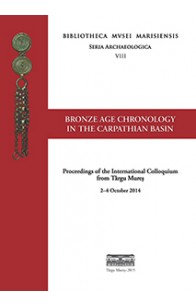Rezultate căutare pentru 'Iulia Elena Hossu'
SOMMAIRE
Horea Poenar, A World to Win. But in Whose Image?
I. The Challenge of Community
Simon Harel, Face aux littératures des Premières Nations
Florin Poenaru, We, the People!: Community, Populism and the Crisis of Political Representation
Alex Cistelecan, Community Building in Post-historical Times
Vladimir Borțun, The EU is Naked: The Progressive Clothes of a Capitalist Project
Horea Poenar, Bad New World. The (Relative) Rebirth of the Commons
Călina Părău, Community and Togetherness after the Non-sharable
Alexandru Matei, De la métaphysique du « commun » au « comment vivre ensemble ». Jean-Luc Nancy et Roland Barthes sur la communauté
Aura Poenar, Reconstructing Communities. In Spite of all Machinery of Disimagination
Corin Braga, L’attaque contre l’individualité dans les antiutopies totalitaires modernes
Diana I. Santiago, Slaves and Slavery in the 19th Century Puerto Rican Literature
Laura T. Ilea, Inch’Allah : La honte et la « géographie de l’affect »
Emmanuela Pustan, On the Artistic Propensity of Pathology: Georges Didi-Huberman and the Invention of Hysteria
II. Communities at Work
Ioan Pop-Curșeu, Can Art (Re)build a Community? The Roşia Montană Case, between Past and Future
Ruxandra Cesereanu, Political Escapes from Prisons and Camps in the 20th Century – Antisystemic Mentalities
Marius Lazăr, What Can Be Seen. Documenting the Transition Between Telling and Showing
Carmen Borbély, Communities under Erasure in Seamus Deane’s Reading in the Dark
Petronia Popa Petrar, Written Communities: Imagining Connection in Virginia Woolf’s Novels
Alina Monica Toma, Dystopian Community in Lois Lowry’s Novel The Giver
Amalia Cotoi, Mircea Nedelciu’s Community of Tratament fabulatoriu
Rareș Moldovan, The State of Play: Geektopia in Ready Player One
Doru Pop, Deterritorialized Cinema, Dislocated Spaces and Disembodied Characters in Bogdan Mirică’s Câini
Mihaiela Ilea, Niche Structures in Television. Video Poetry – Visually Reading the Reality
Răzvan Cîmpean, Kaleidoscopic History. Visually Representing Community in Tarkovsky’s The Mirror
Cristina Popescu, The Woman as a Misfit in Michelangelo Antonioni’s Tetralogy
Cristina Diamant, Stranger(s’) Voices at Home. The Many Faces of Cillian Murphy as the Misfit
Iulia Rădac, The Posture of the Writer in a Teenager’s Book: Mircea Eliade’s Romanul Adolescentului Miop
Book Reviews
CONTENTS
Vorwort
Ondřej CHVOJKA
Chronologie und Kulturen der südböhmischen Bronzezeit und ihre Parallelisierung zu den Donaugebieten und Karpatenbecken
Viktória KISS–Szilvia FÁBIÁN–Tamás HAJDU–Kitti KÖHLER–Gabriella KULCSÁR–István MAJOR–Géza SZABÓ
Contributions to the Relative and Absolute Chronology of the Early and Middle Bronze Age in Western Hungary Based on Radiocarbon Dating of Human Bones
Marija LJUŠTINA–Katarina DMITROVIĆ
Core vs. Periphery: Some Stratigraphical and Chronological Remarks on the Vatin Culture in Banat and Western Serbia
Katarina DMITROVIĆ–Marija LJUŠTINA
Metal Finds as Indicators of Relations Between the Middle Bronze Age Cultures on Western and Northern Serbia
Florin GOGÂLTAN
The Early and Middle Bronze Age Chronology on the Eastern Frontier of the Carpathian Basin. Revisited after 15 Years
József PUSKÁS
Contact Zone: Middle Bronze Age Cultural Connections in the Valley of the Black River (Covasna County, Romania)
Neculai BOLOHAN–Alexandru GAFINCU–Iulian STOLERIU
Middle Bronze Age Chronology East of the Carpathian Area. A Bayesian Model
Horia CIUGUDEAN–Colin P. QUINN
The End of the Wietenberg Culture in the Light of new 14C Dates and its Chronological Relation Towards the Noua Culture
Rita E. NÉMETH
The Middle Bronze Age “Mass Grave” from Voivodeni–La Şcoală. A Chronological Approach
Tibor-Tamás DARÓCZI–Adrian URSUŢIU
Contextualising Decorations. A Study of Placement and Context of Ornaments on Bronze Age Ceramics from the Lower Feneş Valley
Gábor ILON
Zeitstellung der Urnenfelderkultur (1350/1300–750/700 BC) in West-Transdanubien. Ein Versuch mittels Typochronologie und Radiokarbondaten
Attila László
Über die Chronologie des kulturellen Wechsels zwischen der Noua-Coslogeni Kultur und der Nachfolger- Kulturen mit kannelierter und mit ritz- und stempelverzierter Keramik in den innen- und aussenkarpatischen Gebieten. Einige Lehren der Radiokarbondatierungen
János Gábor TARBAY
The Reanalysis of the Eponymous Hoard from Gyermely-Szomor and the HaA2 Period in the Territory of Hungary
Tiberius BADER
Zur Chronologie Der Lanzenspitzen im Karpaten-Donau-Raum
Abbreviations





